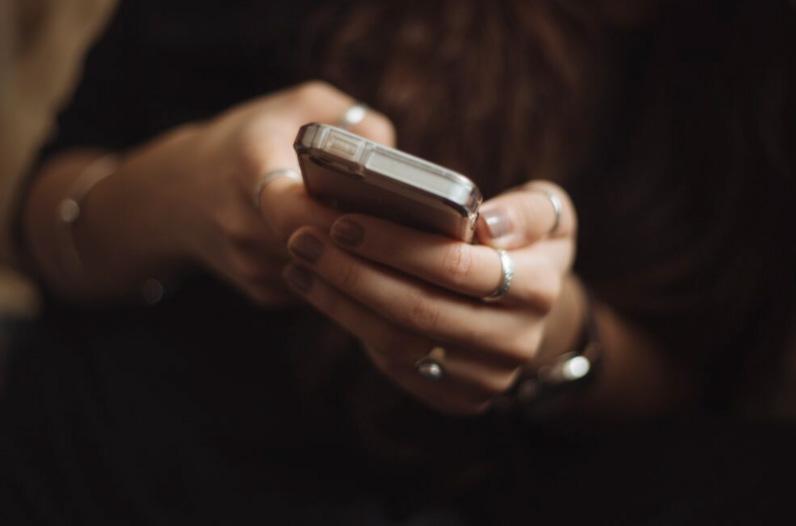
5 minute read
GC:FITNESS
by PaulGC
GC:FITNESS How To Prevent Tinder Fingers.
LUIS RIBEIRO
Advertisement
Founder of Club Health www.clubhealth.uk
Let’s set the scene
A patient walks in the Club for their scheduled physiotherapy appointment. The issue at hand? An actual hand issue. The patient explained that she was developing onset right wrist pain. The pain was located on the radial part of the wrist and worsened by extension, abduction or adduction of her thumb. Once she finished explaining the condition, I asked a rather weird question:
Luis Ribeiro: Are you on Tinder?
The patient was stupefied.
Patient: Yes, how do you know? LR: You should try swiping right sometimes.
We both laughed out loud before I finally revealed how her condition and a dating app are related.
LR: You got Tinder-nitis!
Before you start Googling what Tinder-nitis is, let me come out and say that it’s not a medical term or condition. It’s a term I came up with to describe the constant and repetitive use of the app which leads to what my patient pretty accurately describes.
While the name is quite specific and points to the famous app, this condition is opening a larger discussion regarding the use of mobile phones and the stress

we put our thumbs and hands through. Texting, swiping, scrolling, mobile phones have become an extension of our hands. Where does this constant smartphone use lead? It sets patients on a path towards tendinitis and arthritis. The condition is more widely known as “texting thumb” (again, not a medical term) dates back to the 80s, the video games era. During that period, you would hear the same description of the condition but a different name, the “Nintendo thumb” which in the 90s and early 00s “BlackBerry thumb” was the diagnosis du jour. It’s basically laypeople’s terminology for discomfort that they were having in their hands due to the constant use of the phone.
Which brings us to the next point of order: smartphones. Smartphones are not ergonomically designed for repetitive use over long periods of time. As a result, people get sore. The repetitive use of a smartphone is categorised as a repetitive stress injury (RSI) as there is nothing broken or dislocated in the hand, and in many cases there isn’t even much inflammation.
An RSI is a “diagnosis of exclusion,” meaning that all other diagnoses have been ruled out. When we operate a smartphone, there’s a whole slew of complex motions going on under the skin. Muscles are contracting, tendons are colliding, and over time, the hands develop the soreness described by our client.
What’s The Prescription? What’s The Solution?
I’m sure that in your ideal world, I would be able to prescribe a cream, a pill or a magic potion for that matter that would make the soreness go away and keep you clicking, swiping, and scrolling.
Unfortunately, the solution to this problem is much simpler and unimaginative: give your hand a rest. Put the phone down and allow your muscles to rest. You could also switch hands if you absolutely must keep going but the best course of action is to decrease the time you use the phone.
Take frequent breaks over the course of the day. Open and close your fingers,stretch your wrists and forearms. When your hand starts to cramp up and get sore while you’re using your phone, that’s just your body’s way of telling you to take it easy. Listen to your body. Some might consider swiping relentlessly on Tinder a sport, but we won’t be seeing it at the Olympic Games schedule any time soon. Jokes aside, In the world of orthopaedics, overuse injuries are those caused by repetitive microtrauma to the musculoskeletal system. Often seen in sports, these injuries develop subtly over time. Examples of overuse injuries are tennis elbow, runner’s knee, jumper’s knee, little leaguer’s shoulder, shin splints, and more.
What’s interesting to see is that mobile phones and video games are the new cause of overuse injuries.



Analysing My Patient’s Case
Let’s have a closer look at the case of my 21-year-old female student patient. Without significant medical history, she developed gradual onset right wrist pain. The pain was located on the radial part of the wrist and worsened by extension, abduction or adduction of her thumb.
She was diagnosed with wrist tendonitis secondary to De Quervain’s tenosynovitis (a painful condition affecting the tendons on the thumb side of your wrist). This injury greatly affected her ability to perform daily activities. The pain was only on the palmar side of the wrist/thumb and there was no pain on the dorsal side. Symptoms persisted to the point where she was no longer able to hold anything heavy because of the pain.
A week later, she became aware that her symptoms worsened after she started using her new iPhone X, which she obtained approximately 2 months prior to the onset of the symptoms. Taking into consideration the iPhone’s screen is large which translates to more strenuous movements of the fingers and that she started spending considerable time on Tinder, you can immediately see the root of the problem. She held the iPhone with her right hand and texted/ swiped/scrolled with thumb on the same hand. She previously used the iPhone 6, which had a much smaller body and display.
After changing her habitual practice of holding the smartphone with her right hand, she started to hold the phone with her left hand, manipulating the display with her right index finger. Symptoms gradually improved and within a few weeks, they went away. I hope you found this article helpful. Our team here at the Club is always ready to help you with any and every injury, no matter how minor it seems.

THE JOURNAL FOR INDUSTRY LEADERS
www.gchangersmag.com











